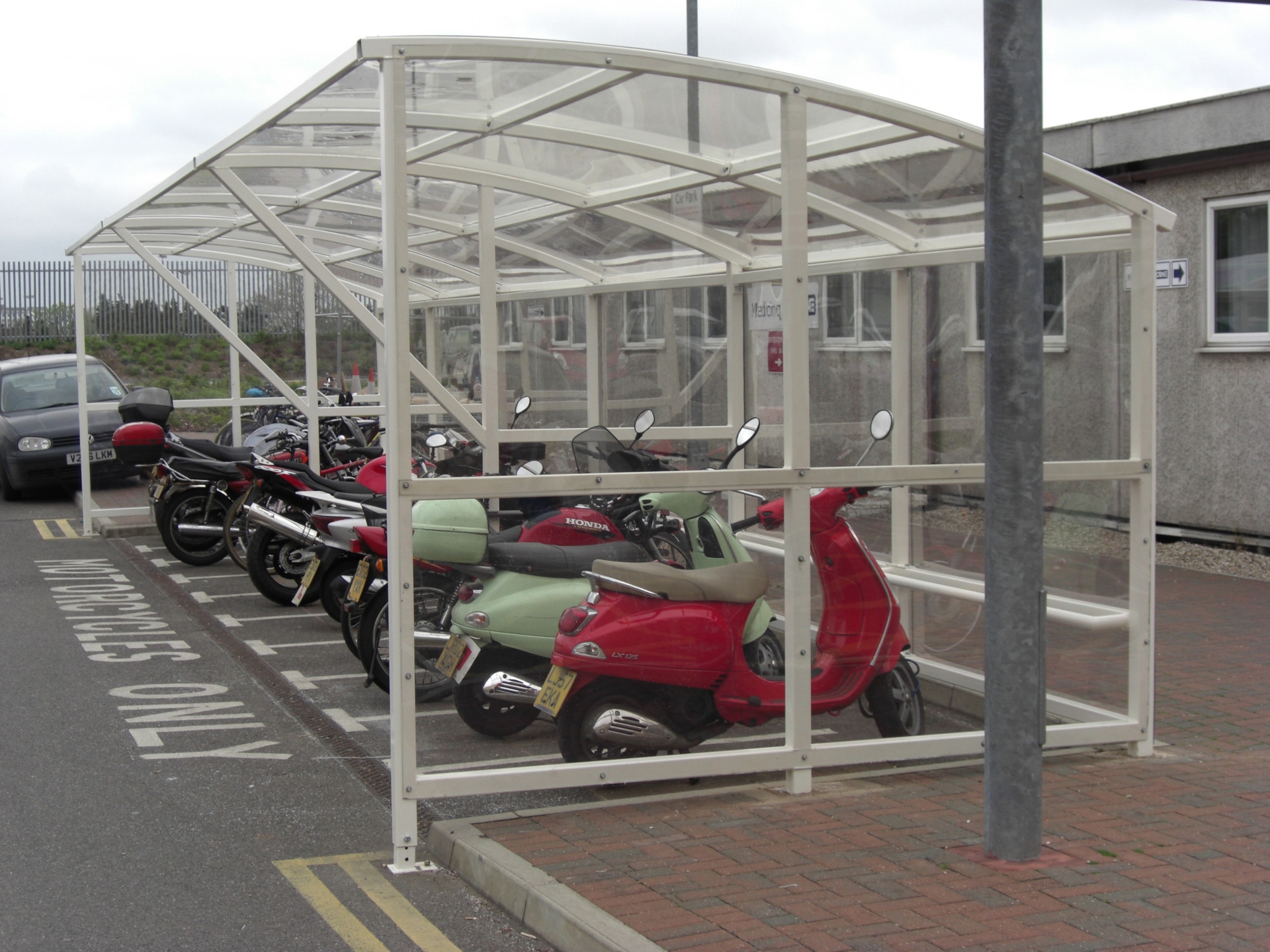Shelters, whether for vehicles, prams, or outdoor activities like smoking, sports or waiting, are important structures that protect valuable assets from the elements and provide comfort to users. To ensure they continue to serve their purpose effectively, it’s crucial to maintain them year-round. Regular upkeep extends their life and keeps them looking good and functioning properly, regardless of the season.
Here are some essential maintenance tips to help you keep your shelters in top condition throughout the year and ensure they remain durable and reliable for years to come.
Why Is Maintenance Important?
Deciding to invest in a shelter is always a good choice – they upgrade your property, provide extra amenities to clients, visitors, and employees, and show people you care about their comfort and maintain a good working environment. Our shelters are built from robust materials like steel and strong polycarbonate panels. Furthermore, our steel frames can be galvanised and powder-coated for even more superior protection from the elements. This makes our products fairly low maintenance, but this isn’t to say that you shouldn’t take care of them at all. This is especially applicable for heavily used shelters that see a lot of traffic.
Regular maintenance of shelters is essential to ensure their longevity and effectiveness. Without proper upkeep, shelters can deteriorate due to weather exposure, leading to rust, corrosion, or structural damage. Regular inspections and repairs prevent minor issues from escalating into costly problems. Maintenance also keeps the shelter looking aesthetically pleasing and ensures it remains safe for users. By investing in routine care, you not only extend the life of the shelter but also protect the investment you’ve made in these structures.
Regular Cleaning
Once you install a new shelter, it is best practice to include it in the existing flow of scheduled cleaning. This is less of a problem in the summer and more of an issue in the autumn and winter, as dirt, mud, leaves and other debris naturally accumulate more during these seasons. All of these can get stuck to shelters and clump up in corners, making them look dirty, untidy and unkept spaces, which will diminish their comfort and appeal to users. So, make sure you regularly sweep around and under the shelter to keep the space looking nice and clean.
It also may be a good idea to occasionally wash the shelter’s surfaces—frame and panels. Use mild detergents to clean the shelter’s surfaces, avoiding harsh chemicals that could damage the material.
Inspection and Repairs
Detecting problems quickly is the way to a long-lasting life and a shelter that will serve its purpose well for years to come. Making regular checkups and keeping up with repairs is probably the most important takeaway from this. Routine checks will allow you to inspect for any signs of wear, rust, or damage and catch any issues as soon as possible. When inspecting, pay attention to the frame and panels, as well as to joints, bolts, and any moving parts, if your shelter has them.
Once you have found an issue, our advice is to address it promptly. On the one hand, if the issue is small, this will prevent it from becoming a major problem; on the other, it will ensure that no accidents happen if it’s something more serious.
Weather Protection
When it comes to preparing outdoor shelters for the weather, the best cure is prevention. When choosing a shelter, it is always advised to select one with all the extra protective layers it can—the steel frame should be galvanised, powder-coated, or both for even better shielding from the elements.
Once you have a solid base to step on, maintenance becomes easier. If your shelter has protective paint or coating, you should regularly check it for scratches and chips and fix those, but you should also consider reapplying the paint every few seasons to guard against rust and weather damage.
When it comes to weather worries, we also recommend checking anchoring every now and then, especially before the cooler months when it might get very windy. You should always ensure that the shelter is securely anchored and check it again, particularly after storms or high winds.
Lastly, when thinking about weather protection, always keep in mind the changing seasons and their respective challenges. Autumn and winter bring cooler temperatures and rain, as well as leaves and mud, while spring and summer come with stronger sun and harmful UV-rays. Depending on the shelter you have different seasons might also mean lower or higher amounts of users which may need to be planned for.
Preventative Measures
As we mentioned earlier, getting the right shelter will save you a lot of issues down the road, but this isn’t all you can do to stave off problems. Make sure that the steel is galvanised and preferably powder-coated, too, as the powder-coating adds an extra layer of protection. Some shelters are made with polycarbonate panels, which can often be UV-protective, ensuring a longer life for anything under them.
Another thing you can think about is lubricating any moving parts, such as doors or sliding panels, to ensure smooth operation. Additionally, if your shelter has wooden parts, like some of our bin stores, you may want to occasionally varnish the wood to prevent its colour from fading due to sun exposure and protect it from moisture and rot.
Maintaining your shelters year-round is key to ensuring their durability, safety, and aesthetic appeal. Regular cleaning, inspections, and timely repairs prevent weather damage and keep your shelters in top condition for longer. Proper maintenance protects both the shelter structure and your investment while providing a comfortable, safe space for customers, employees, and assets. With preventative measures in place, your shelters will remain reliable and functional throughout the changing seasons, ensuring they serve your business well for years to come.
